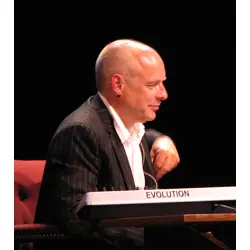 Brian Eno
Brian Eno“Ambient music must be able to accommodate many levels of listening attention without enforcing one in particular; it must be as ignorable as it is interesting.” So said Brian Eno back towards the early part of his career when he was producing such seminal works as Music For Airports and Thursday Afternoon. Eno piloted a new form of music into the popular consciousness, one that didn't rely on form or rhythm. It was based on texture and tone, and utilised piano and synthesiser to evoke feeling and response. He likened it to furniture; it can be beautiful, and exist as an aesthetic entity, but direct interaction is not required for its presence to be felt in a room.
Lux sees Eno reaching back to a patient style of ambience, playing with light and shade in beautiful fashion. It feels like an exercise in conveying the phenomena of light, and how it reflects off different surfaces or is absorbed by others. Warm, looping piano notes slowly drift over iridescent synth chords flowing endlessly underneath. It feels like steady breathing, and you can almost see the dust floating through the air of his studio as he plays. The notes are so delicate and measured, it doesn't seem like it would disturb anything passing through the sound waves.
There is a strong sense of space, but it never feels empty. There is always something there lingering underneath the decaying notes, gently holding on to you as you drift through the soundscape. While form is absent, control is not, and Brian Eno reminds us again just how good he is at weaving these abstract worlds.















